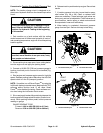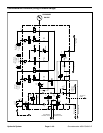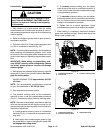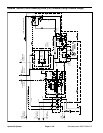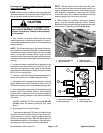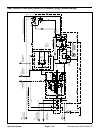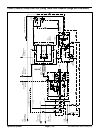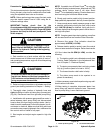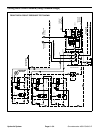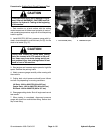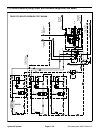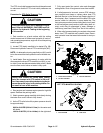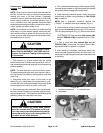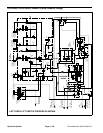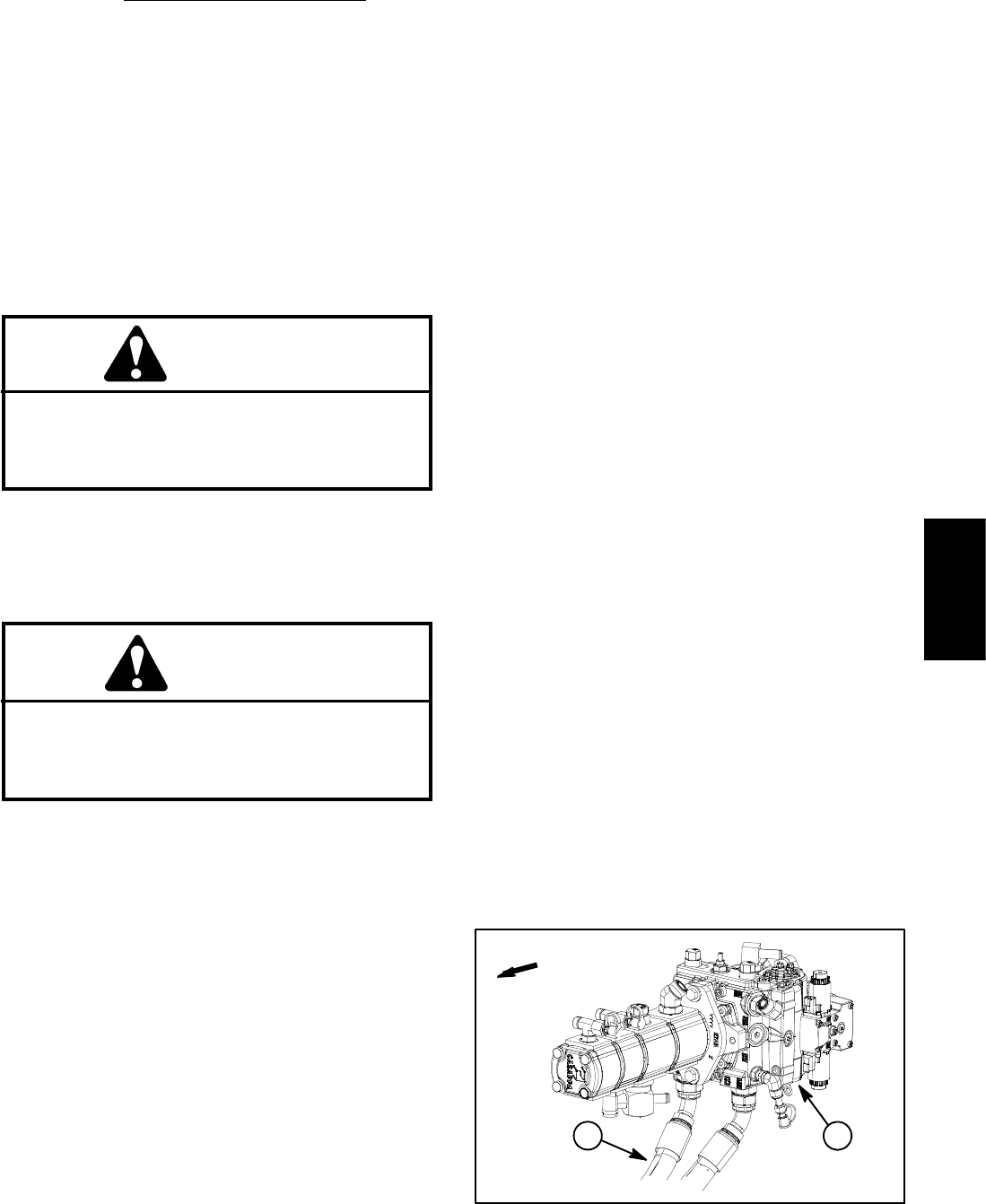
Groundsmaster 4000--D/4010--D Hydraulic SystemPage 4 -- 53
Procedure for Piston (Traction) Pump Flow
Test
This test measures piston (traction) pump output (flow).
During this test, pump load is created at the flow meter
using the adjustable load valve on the tester.
NOTE: Before performing piston pump flow test, make
sure that traction speed is set to 100% using the In-
foCenter settings menu.
IMPORTANT: Traction circuit flow for the
Groundsmaster4000/4010 isapproximately 30GPM
(113.5LPM). Use40 GPMHydraulic Tester #AT40002
(pressure and flow) for this test (see Special Tools
in this chapter).
CAUTION
Prevent personal injury and/or damage to equip-
ment. Read all WARNINGS, CAUTIONS and Pre-
cautions for Hydraulic Testing at the beginning
of this section.
1. Park machine on a level surface with the cutting
decks lowered and off. Make sure hydraulic oil is at nor-
mal operating temperature, engine isoff and theparking
brake is applied.
CAUTION
All wheels willbe off theground androtatingdur-
ing this test. Make sure machine is supported so
itwill notmoveand accidentally fallto preventi n-
juring anyone near the machine.
2. Raise and support machine so all wheels are off the
ground (see Jacking Instructions in Chapter 1 -- Safety).
3. Thoroughly clean junction of hydraulic hose and
right side fittingon bottom ofpiston pump (forward port)
(Fig. 36). Disconnect hose from right side pump fitting.
4. Install tester with pressure gauge and flow meter in
series between piston pump fitting and disconnected
hosetoallowflowfromtractionpumptotester.Usehy-
draulichosekit(see SpecialToolsinthischapter) tocon-
nect tester to machine. Make sure that fitting and hose
connectionsare properlytightened. Also,make surethe
flow control valve on tester is fully open.
5. Start engine and adjust engine speed to high idle
speed.
NOTE: If possible, turn off Smart Power
TM
by using the
InfoCenter display protected menu. Machines with TEC
software above revision level G will allow Smart
Power
TM
to bedisabled fortesting. Checksoftware revi-
sion level using the InfoCenter About screen.
6. Slowly push traction pedal to fully forward position.
Keep pedal fully depressed in the fully forward position.
7. Have second person watch pressure gauge on test-
er carefully while slowly closing the flow control valve
until 1000 PSI (69 bar) is obtained. Verify with the In-
foCenter display that the engine speed is still at the cor-
rect high idle speed.
NOTE: If engine speed drops during testing, pump flow
will decrease and flow test results will be inaccurate.
8. Observe flow gauge. Flow indication should be
approximately 30 GPM (113 LPM).
9. Release traction pedal to neutral, open flow control
valveontesterandshutoffengine. Record test results.
10.If flow is less than 24 GPM (91 LPM), consider the
following:
A. The traction pedal is not calibrated correctly (see
Traction Pedal Calibration in the Adjustments sec-
tion of Chapter 5 -- Electrical System).
B. The piston pump swash plate is not being rotated
fully (e.g. traction speed is not set to 100%).
C. The forward traction relief valve is faulty.
D.Thepistonpumpneedstoberepairedorre-
placed as necessary.
11.Make necessary repairsbefore performing anyaddi-
tional traction circuit tests.
12.When testing is complete, disconnect tester from
pump fitting and machine hydraulic hose. Reconnect
hose to pump fitting. Lower machine to ground.
1. Piston (traction) pump 2. Forward direction hose
Figure 36
FRONT
1
2
Hydraulic
System



